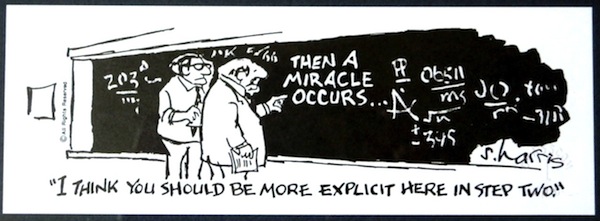That was the title of a Barron’s article this past week. There’s been more and more press about the gap between the rich and the poor. In my work as a real estate agent focussing on renting to low income people, I see people who aren’t lazy, but just the opposite. Showing me proof of income made by working a 40+ hour week at a minimum wage job, and asking if we can take their cash income into account as well. The regular extra money they make doing some labor or babysitting nights or weekends. When you make $1400 a month working full time, you’re not going to able to afford much in the way of housing. We try to see three times a rent for income, i.e. $2400/mo income to qualify for an $800/mo apartment.
The Barron’s article started off with an observation, $1.4 trillion cash in the economy. The federal reserve backs up that number. The authors then make 2 logistical leaps that are beyond comprehension. First, that this cash is income. Forget for a moment that most people don’t keep more than a few hundred dollars sitting around. Even if they did, it only counted as income (declared or not) when it came in. The authors then assume that 80% of this money is income to the poorest 1/3 of households, the bottom 40 million families. Then, by magic, wait, not magic, a miracle. As in this cartoon.
Where was I? They conclude that the bottom 1/3 have an income that’s understated by as much as $30-$40K per year. To be fair to Barron’s and their real authors, the article was published in the “other voices” page.  This is where essays are solicited from readers who have some knowledge of finance. Whoever accepted this article blew it, in my opinion. Is there no cash economy? No. Of course there is. However, the numbers presented in the article offer bad math and a false conclusion. The income gap is so large that if it’s exaggerated by some percent, it’s still an issue. Sorry, Barron’s, this article isn’t worthy of your otherwise fine paper.
(Note: I am not condoning undeclared income, just putting it in perspective. A real estate agent is not an agent for the IRS, in fact we have an obligation to count any and all income, regardless of source.)


Wow, I wonder where the author came up with the idea that 80% of cash is income held by the poorest 1/3 of earners. Just based on my experience and people I know, I would think the average ‘extra cash income’ from people in the bottom third of earners would be closer to $5,000. $30 – $40K on average is laughable. I have seen several people who babysit, cut hair, fix cars, and mow lawns earn around $5K.
Thank you for your thoughts on this. I agree 100%. Are some people earning $30K completely off the books? Sure. Some small fraction, not the entire bottom 1/3. I was thinking the same $5000/yr, just a bit of side work.
Very interesting piece and glad to see someone questioning assumptions in the major press – especially those about the poorest in our society whose perspectives are rarely considered.
I have a suggestion/request for you: I want to share your piece with others but I won’t and here’s why: you point out two assumptions that undermine the conclusions of the article, but you don’t give any explanation to support your criticism. The only way I can use your argument is if I already understand that that much cash can’t all be income, and that it doesn’t make sense that 80% of the money could belong to the poorest. I don’t already understand that, being an average Joe on finance.
You start off perfectly with a citation from the Federal Reserve. Can you offer some references or just arguments that explain why the assumptions they make are wrong? Right now it’s just your opinion vs their opinion to someone who doesn’t know much about the size of the cash economy. For example, why wouldn’t all that cash be income? What else could it be?
Thanks for your efforts.
I appreciate the visit and comment. I wrote this nearly a year ago, and the bulk of my argument takes place in the second paragraph. In which I talk about how the Barron’s article assumes 2 incredible things, (a) that nearly all cash, literally all paper money, is used each and every year for unreported cash transactions, and that 80% of those transactions are made by the bottom 1/3 of the population. Barron’s offers no back of of that assumption. Of course, neither can I offer data to refute it. In my opinion, it was on them to substantiate what in my opinion was a remarkable claim.